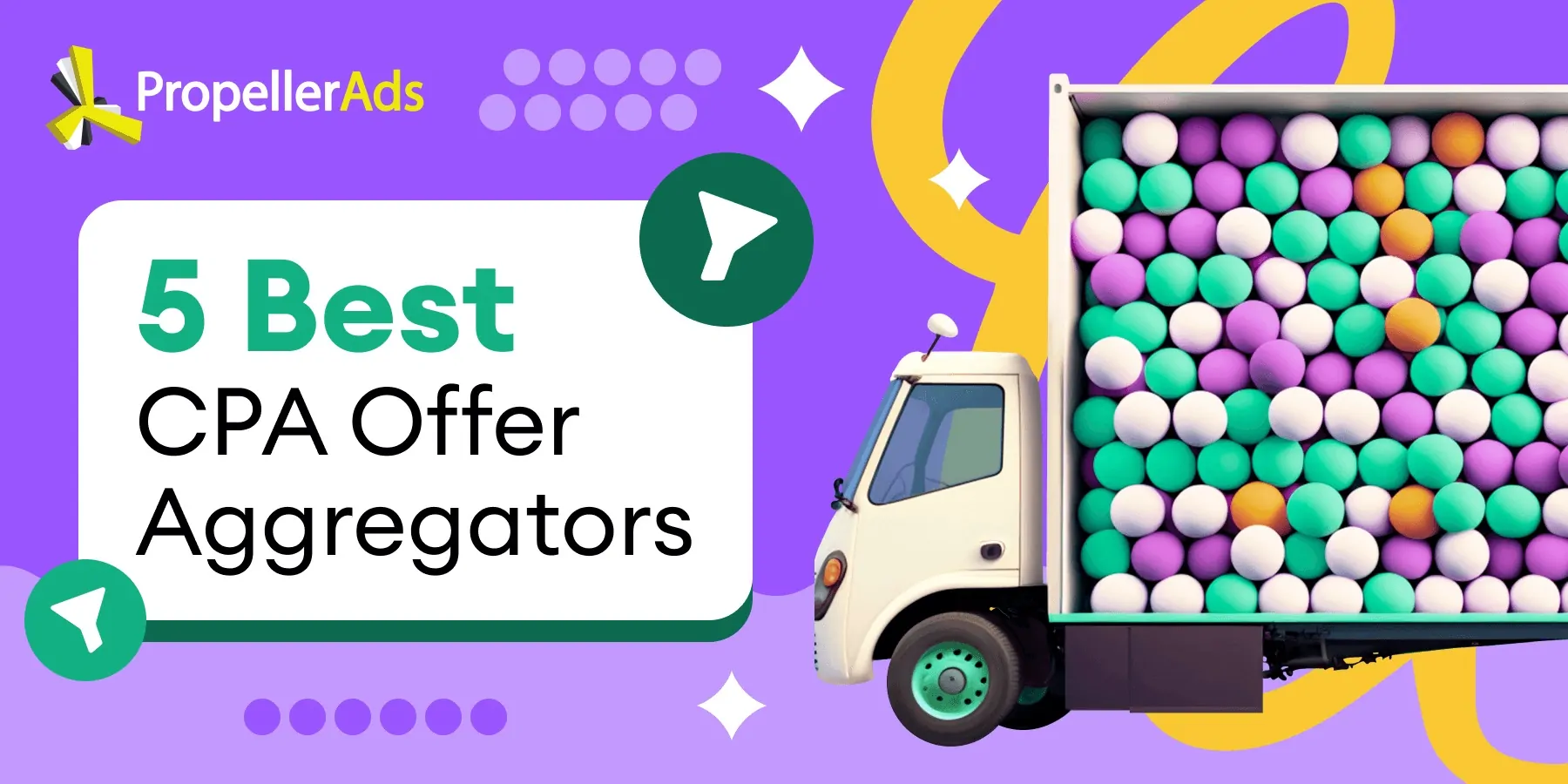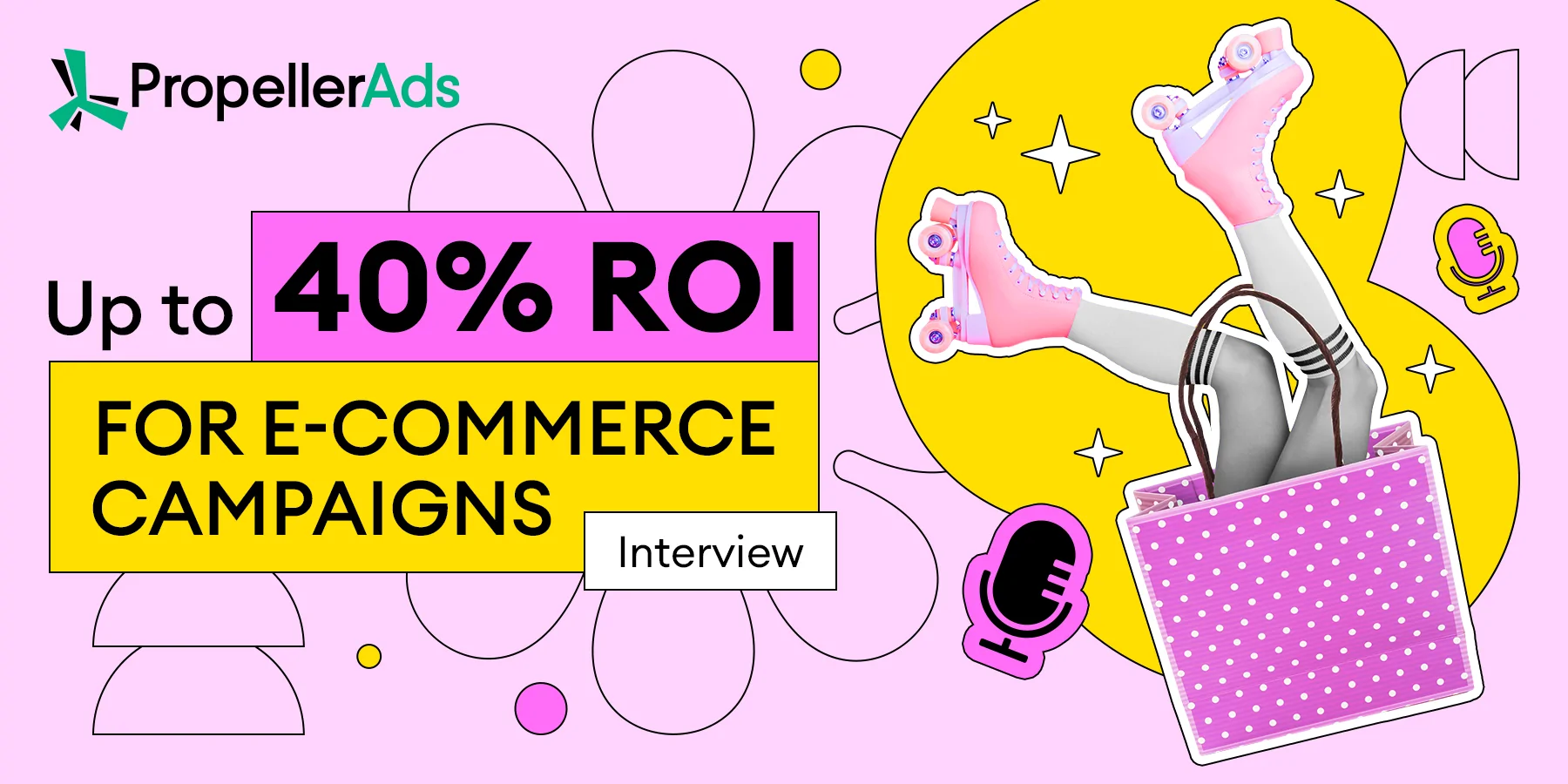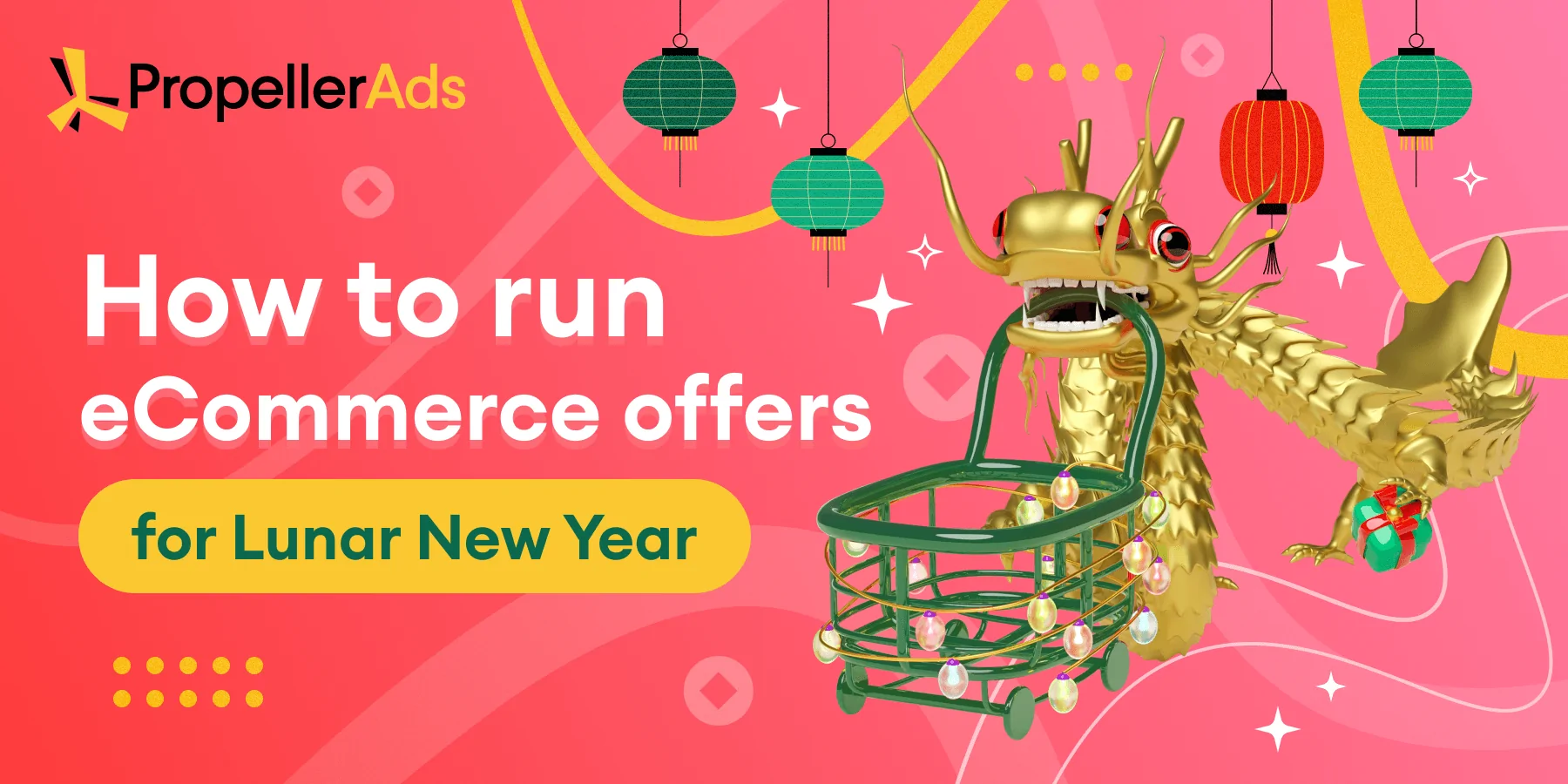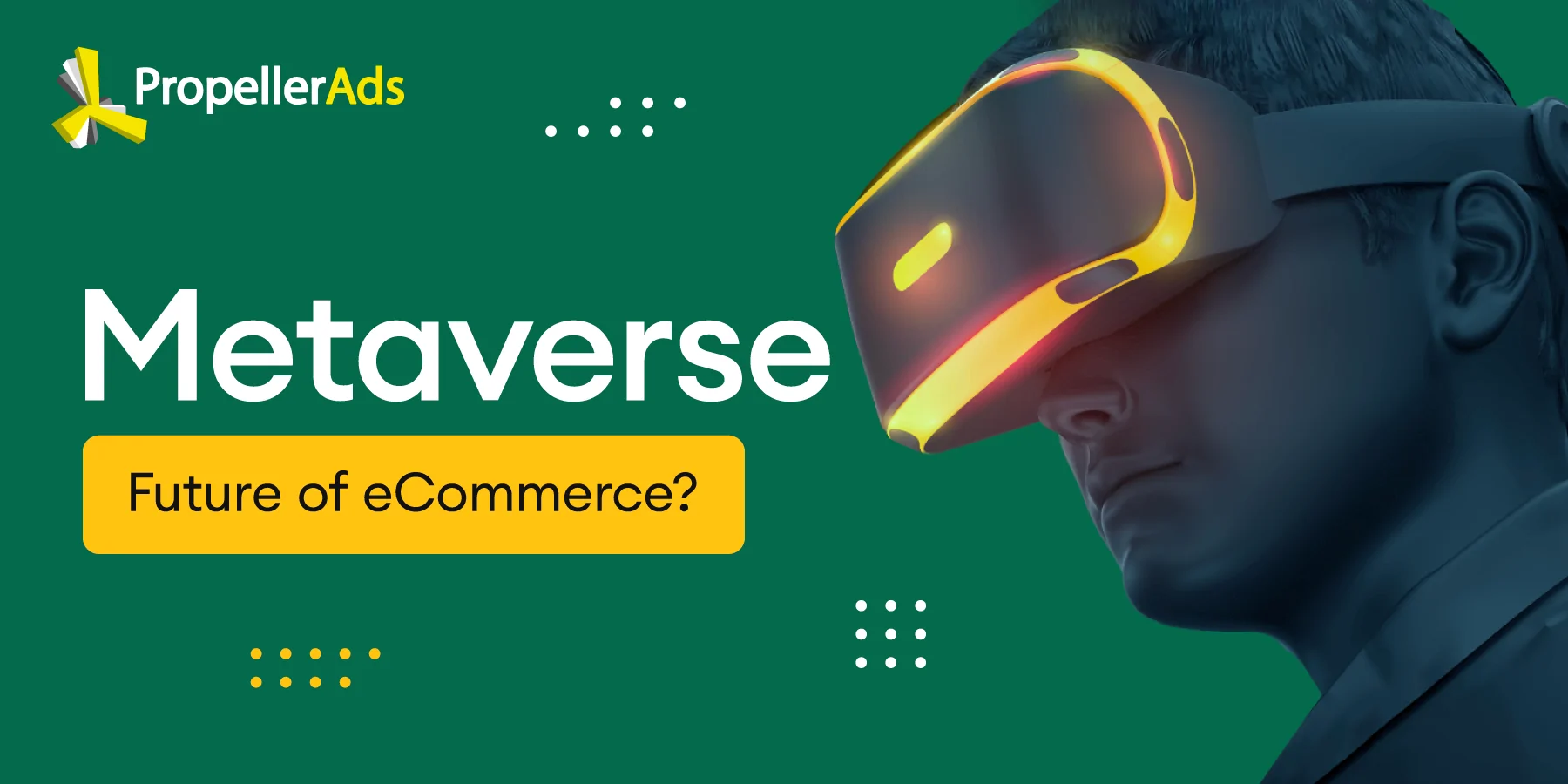eCommerce Offers: What Works and How to Start Smartly?
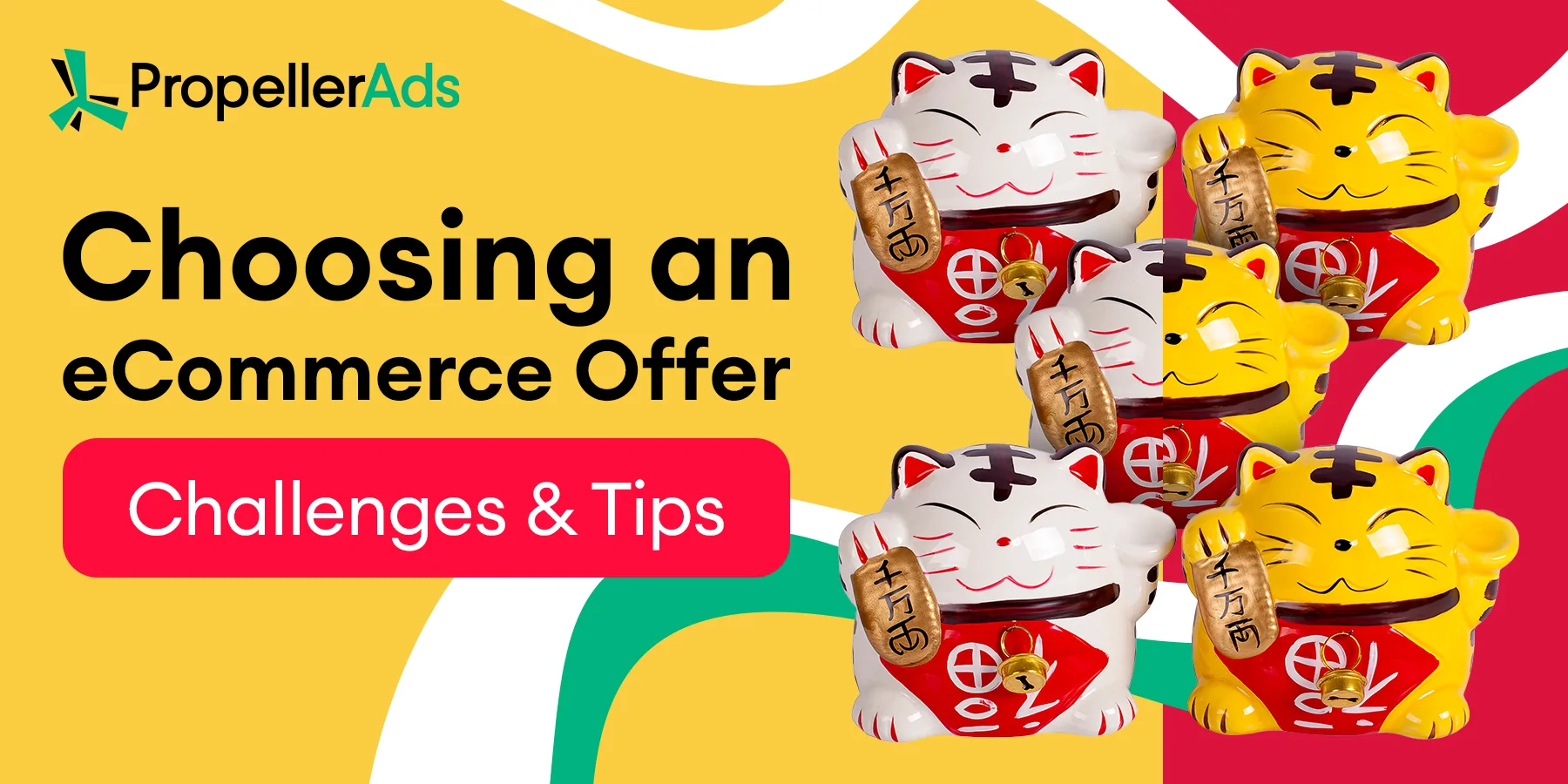
This post is also available in:
PT
ES
What comes to your mind when you hear “eCommerce offers”? We bet all of those are fancy affiliate programs, high payouts, and bright marketing campaigns. Right you are.
The eCommerce vertical is known as one of the most profitable ones, benefiting brands, ad agencies, and affiliates. A well-planned eCommerce strategy can make one a millionaire, but it’s not always easy to start.
What’s all the fuss about? And how to find your place under the sun in the world of eCommerce? Together with a professional media buyer, Serge Abramov, and our Senior Account Strategist, Sophia Yakovleva, we are ready to bring some insights.
About eCommerce offers in general
Since there might be a bit of confusion about eCommerce as a whole, let’s start with defining what exactly we are going to talk about.
So, in eCommerce affiliate programs, advertisers promote another company’s products, services, or sites via their own channels and earn a commission for doing so. The range of goods and services can be really broad here – from niche products for geeks to the latest popular smartphones.
Basic eCommerce offers categories
Worldwide large brands affiliate programs – AliExpress, Shopee, Lazada
The most well-paid and desired eCommerce offers definitely are those of large companies. Even though a lot of these online shops are Asian, they are popular all over the world and work for all GEOs.
- Top GEOs: ID, TH, VN, MY, SG, PH
- Top ad formats: Push notifications, Interstitial
- Pricing models: CPS (cost-per-sale, commission for a purchase) or CPI (cost-per-install, commission for an installed shopping app)
- Best time to advertise: marketplace sales, especially the large ones (9/09, 11/11, 12/12, Cyber Day, Halloween, Valentine’s Day, Chinese New Year, etc.)
Large eCommerce offers: what’s the trouble?
eCommerce offers from large stores such as AliExpress, or Lazada can boast of large sales volumes, but are not easy to get. Yup, you will hardly find them in a CPA Network, simply browsing the list of available ones.
The issue is that large online stores have strict brand policies and requirements, that is why not every advertiser can grab them freely. Mostly, to make a deal with AliExpress, Shopee, or any other similar store, you need to visit marketing conferences and do some serious networking, building relationships with these brands and proving your high level of professionalism.
A quick tip: witty alternative to direct affiliate programs with large stores
Still, if you want to sell products from Aliexpress or other similar marketplaces, but stepping into direct deals seems too complicated, there is an alternative solution – dropshipping.
Services like Shopify or Wix have all the inventory to help you handle all the issues connected with having your own store. Basically, such eCommerce platforms not only allow you to tailor a full-fledged space to present the goods, but also, you don’t need to take care of storing, shipping, and even making a deal + passing the policy of the large marketplace like Amazon. Basically, such integration is a great alternative to affiliate programs.
Also, except for the real giants listed above, there are GEO-related marketplaces to consider. Just to give some examples, you might be interested in SaleHoo (New Zealand), Noon.com (Arabian marketplace), El Corte Inglés (Spain), and more.
And…
Local themed stores
If this is not your first day in digital marketing, then you may know the most popular eCommerce niches:
-
Clothes
-
Wellness and Beauty
-
Electronics
-
Home and equipment
-
Jewelry
-
Cosmetics
-
Tools
-
Fitness goods
And more. But what about something more specialized, like Survival or Pet goods? How about the whole GeekMarket, Yoga app, or spirituality guide like CosmosWithLove?
Sure, the world of eCommerce is as broad as the ocean and goes far beyond basic goods. As Serge Abramov claims,
“It makes sense to start your eCommerce journey with local marketplaces, both GEO-centered or interest-based. This can be easily explained – smaller and themed shops are associated with less competition, plus – it’s easier to get their approval for an advertising deal, which makes such shops an easy and prospective start.”
Creatives: what eCommerce trends are there?
Basically, even though all the shops and affiliate programs vary stylistically and, in essence, all eCommerce creatives follow a range of patterns. Let’s reveal them.
- Super-low prices
Banal or not, but discounts work as a trigger for most users. Well, let’s be honest, people easily buy goods they were not aiming for if those goods are cheap and especially – if the price is reduced. Add concrete price and the lower – the more appealing it looks. You were not even thinking of buying an iPhone? Well, what if we tell you that it costs $200…?

- Head-spinning discount percentage
Another classic example is a significant discount. Selling items at a lower price, you have to mention the percentage of a discount and you’ll see that numbers have a magical power.

- Exclusive and hyping goods
Hope, you have TikTok and Instagram to track the fanciest accessories, cosmetics, and especially – sneakers! Because, yes, according to our account managers and media buyers, banners with exclusive and trendy goods work like crazy.

If you are not sure which sneakers (or BB cream, or smartphone accessories, or whatever) are the most hyped – Serge Abramov, our media buyer, recommends testing pics of the latest popular ones for your creatives.
As Serge noticed, “for the precise results, some advertisers A/B test up to 20 various products to see which attracts more attention. Then they use the best-performing one to present the whole store, and it works!”
Some questions about customer’s funnel peculiarities for eCommerce
How to lead your potential customer right to the conversion? Let’s lean on the experience of advertisers and see how to increase your chances for profit by establishing your customer’s funnel wisely.
Do you need a pre-lander for eCommerce offers?
Opinions vary. As Sophia Yakovleva, our Senior Account Strategist, is convinced, eCommerce offers don’t always require additional steps as a pre-lander.
She says: “From my experience, eCommerce works really well when you send traffic directly to the promo campaign page, main page, or the landing page with a trending/best-selling product. It’s not necessary to add a pre-lander. Also, I would suggest paying special attention to retargeting and engaging users who have already seen your ad. Oftentimes, people may buy more goods after seeing your ad again.”
However, since eCommerce is a pretty broad niche, approaches to advertising vary. Say, sometimes, new or costly goods require additional warm-up, so you may use a pre-lander to add some value, tell a success story, or include customers’ review to make your advertising message more convincing.
What are call centers in eCommerce?
The opposite approach to the one described above – adding more steps to the customer journey, including communication with a call center. Usually, such an approach might be used for really expensive goods.
So, a user sees your ad, clicks it, appears on the landing page (or a pre-lander if you believe that the additional warm-up is needed), and completes the checkout form there, where his contact information is also included.
This is where the advertiser’s or affiliate’s work is over, and the customer is being “passed” to the call center. Considering the offer conditions, such a customer’s application goes to:
-
In-house or corporate call center that usually belongs to the offer owner or advertiser. In such cases, call center workers have scripts and know how to promote the product efficiently.
-
Outsourced call centers, where employees are just freelancers who may not know the product perfectly and therefore – there are huge chances of failure.
The main con of call centers is that they might be a bit intrusive for some potential clients, plus – a phone call complicates the conversion flow, which can end up negatively.
The pros are some additional selling opportunities, like cross-selling (when call center workers offer more relevant goods to a customer, like a brush in addition to eye shadows); up-selling (when a call center worker offers a more expensive product with some exclusive benefits instead of the one chosen initially); down-selling (and the opposite – when a call center worker suggest a cheaper product to a customer who is not ready to pay too much).
To sum up
Traditionally, let’s sum things up and outline essential guidelines for your eCommerce campaign.
- Top eCommerce offers are those from huge digital marketplaces, like AliExpress, Lazada, Shopee, and more. If you have no opportunity to make a deal with them, consider services like Shopify to sell goods from the real giants without making a direct deal.
- Mind seasonality and special deals, offer discounts, track trends – in a word, make sure to follow your potential customers’ desire for affordable and hyping products.
- The best ad formats to try are Push, Popunder and Interstitials.
- For GEO-related offers, like those for Arab or EU audiences, make sure to target corresponding countries and use relevant languages for creatives. If you work with the offer from AliExpress and similar shops, mind top GEOs (currently: ID, TH, VN, MY, SG, PH).
- Get ready to test a lump of creatives with the most exclusive and interesting goods you may have. Consider the test results and promote your shop using the trendiest products. And yes, remember that trends change quickly, so you will have to test more and more. Keep on.
Good luck with your eCommerce journey, and let your wallet get thicker from profits!
